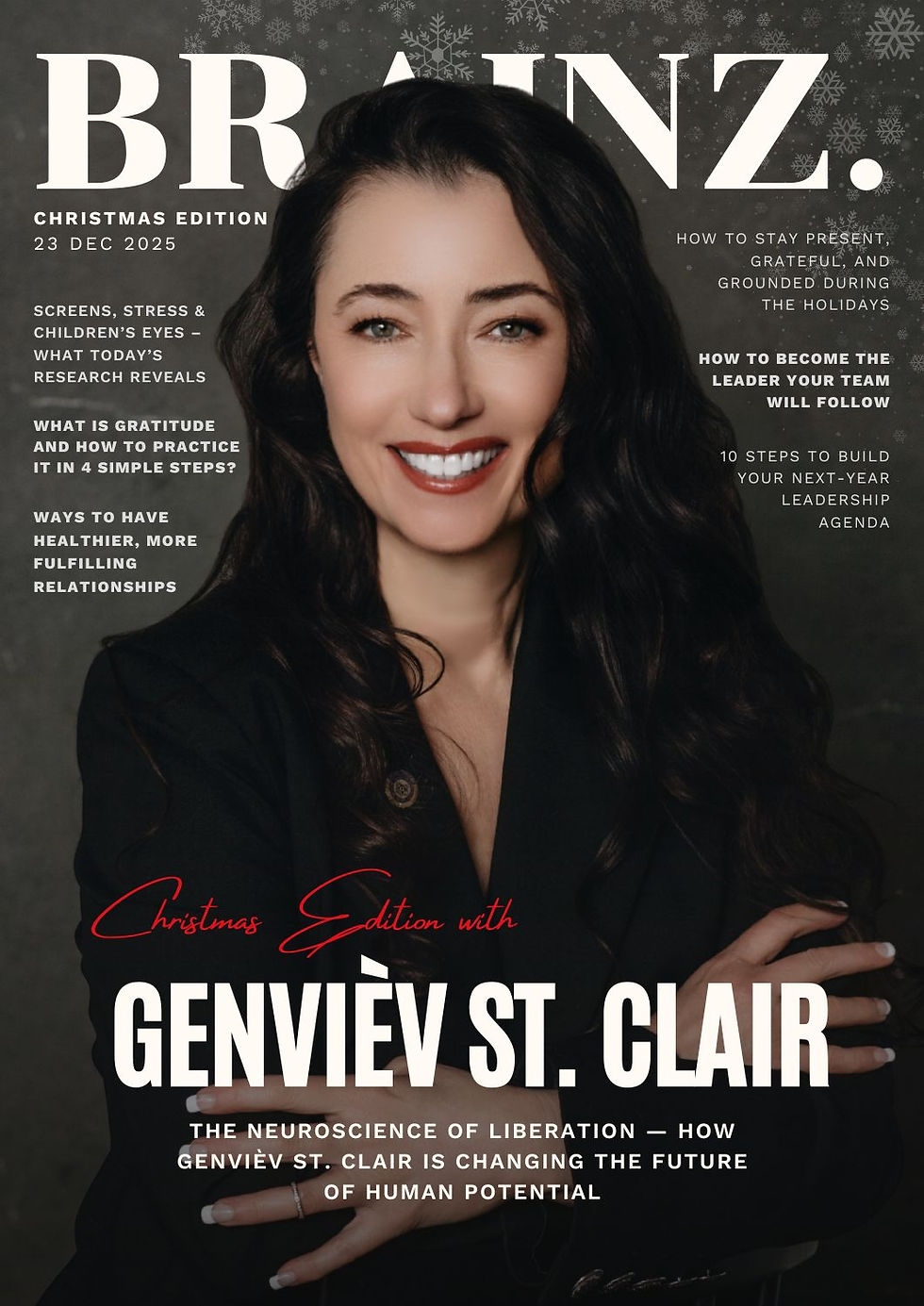How To Heal Your Emotional Trauma
- Brainz Magazine

- Nov 6, 2022
- 4 min read
Written by: Farah Morain, Executive Contributor
Executive Contributors at Brainz Magazine are handpicked and invited to contribute because of their knowledge and valuable insight within their area of expertise.

Did you grow up feeling like your emotions were not allowed, or you felt afraid or misunderstood by them? You were probably left to figure out how to manage the overwhelming load of life which often led to either shutting down, running away, or even fighting back due to your big emotions. This can look like suppressing, dissociating, or expressing emotions in ways that harm others.

Emotional trauma can create self-wounding due to distressing experiences that shake us to our core. This can result from childhood trauma, divorce, harassment, bullying, parental separation, or the death of a loved one. When experiencing emotional trauma, there can be feelings of loss, shame, fear of abandonment, depression, anxiety, chronic anger, and disconnect. What people miss is the connection between the mind and body. These feelings and emotions, often carry physical symptoms that show up in your body. They can look like aches and pain, difficulty falling or staying asleep, difficulty concentrating, hypervigilance, and being easily startled. With emotional trauma, your nervous system is not able to regulate stress and emotions, so you became stuck in suffering.
Feeling your emotions and physical sensations in your body is an ongoing practice that allows for the experience of joy or feeling of goodness, reclaiming your power, setting healthy boundaries, and experiencing the fullness of life. With emotional trauma, often you must unlearn old management strategies that your body had to perform for survival. Healing from emotional trauma teaches that life does not have to be solely about surviving but about living the life you truly desire. As someone who has experienced emotional trauma being separated from my mother at a young age due to immigration. It was difficult to be with all the emotions I felt, as I grew up with the core belief that there were “good and bad” emotions. The separation created a deep sense of loss, and fear of abandonment that showed up in my relationships. Somatic interventions for healing trauma such as Somatic Experiencing have been a wonderful resource for me personally and in my work with clients. Somatic Experiencing developed by Dr. Peter Levine takes a body awareness approach to healing trauma stored in the nervous system. I was able to integrate past traumatic experiences where I felt stuck and learn how to build the capacity to sense my emotions and appropriately express them.
Below I will share with you some efficient ways to befriend your emotions to heal emotional trauma.
1. Acknowledge any sensations in your body
Emotions are rooted in bodily sensations. Identifying the sensations in your body allows you to give it room to show up. Here you can begin to track the sensations that arise. They can look like muscle aches, tightness, or headaches. Questions to ask yourself as you are becoming aware of these sensations: Where do I feel these sensations? What does the sensation look like? Is there a color to this sensation?
2. Identify and sit with the emotions that are coming up
Here you can pause and tune inwards to identify what emotions you are feeling. Often time while experiencing a sensation there can be an emotion that follows. There might be some discomfort as some emotions feel scarier than others. Being able to sit with even a small amount of discomfort you will allow the emotions to move through. Remember, emotions function to let us know important information about our overall being. It is important to do this slowly as you sit with your emotions. Questions to ask yourself: What emotions do I feel? What are my emotions trying to communicate?
3. Develop self-compassion for your emotions
Give yourself grace as some emotions can be painful, overwhelming, and uncomfortable to feel. Don’t build a tent in the valley of your emotions, don’t shame yourself for what you are feeling, and let it be. You are building skills on how to honor your emotions. Ask yourself: What do I need right now? and see what arises. Self-compassion for all that your body holds is a necessary part of healing emotional trauma.
4. Practice Regular Self Care
Finding and doing things that make you feel good in your mind, body, and soul is an act of self-care. This is also your act of self-love to yourself and your body that carried you through these traumatic or stressful life experiences. The use of sound, movement, mindfulness exercises, and engaging with people that make you feel safe is instrumental. Rest is also a huge part of my self-care. I honor emotions when I feel overwhelmed by taking breaking breaks.
Emotions can be complex, and scary yet beautiful when you can honor their role in your life. A deep level of expansion and integration can occur when you deepen into and befriend your emotions.
Follow me on Instagram for more info!

Farah Morain, Executive Contributor Brainz Magazine
Farah Morain is a licensed clinical social worker and somatic psychotherapist in private practice. She works with individuals who have experienced developmental and emotional trauma, chronic stress, anxiety, depression, life transitions, and burnout. Her practice focuses on using a Somatic Experiencing approach to helping therapists, coaches, and other helping professionals learn how to be embodied with their emotions, regulate their nervous system, and find new ways of seeing and being in the world.










.jpg)